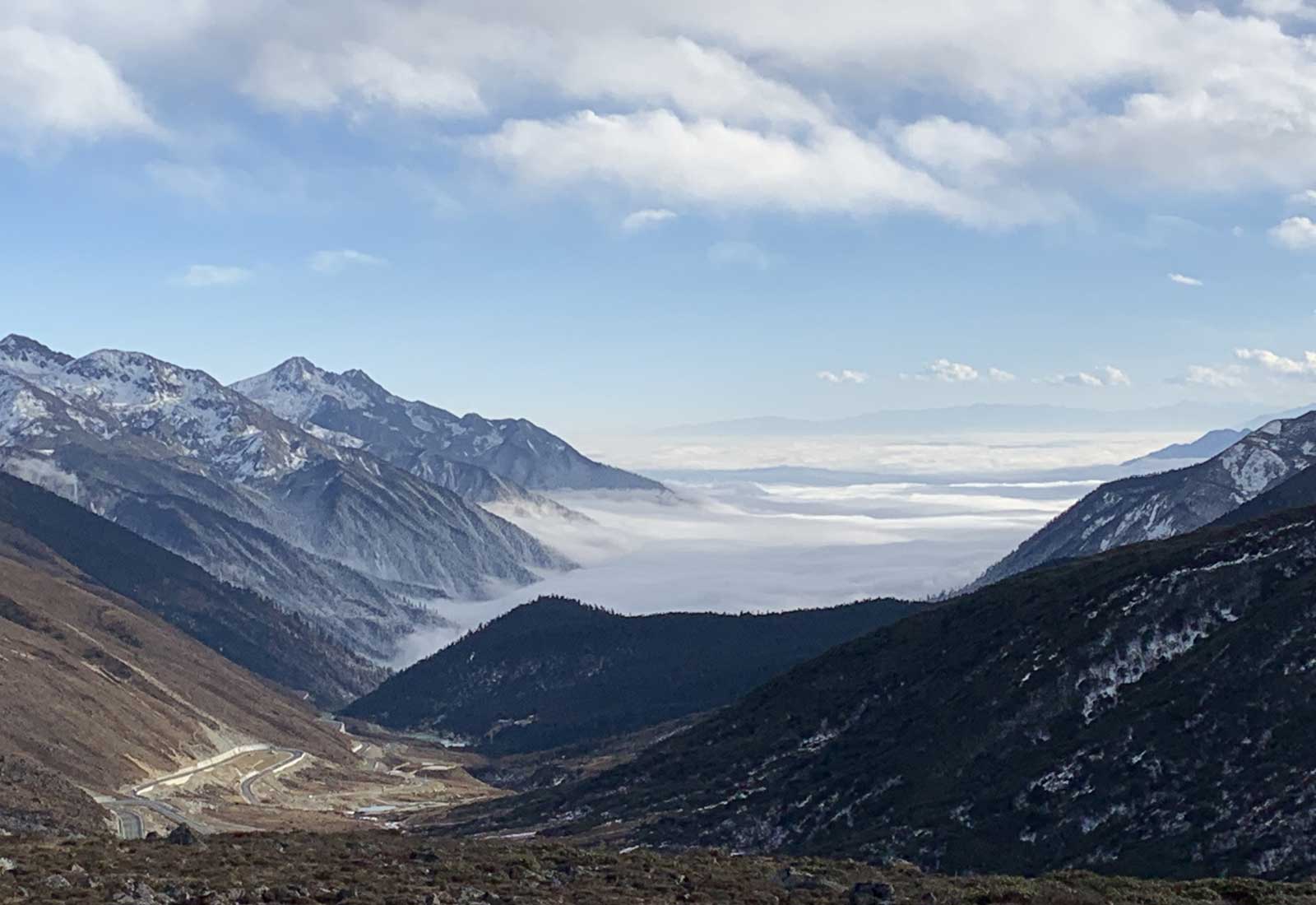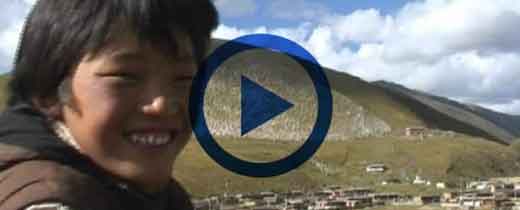
Kham is a region originating from traditional Tibetan culture area and it is often placed alongside “U-tsang” and “Amdo”.
Kham, its scope is roughly equivalent to present-day Tibet Autonomous Region’s Chamdo City, eastern Nagqu city (five counties of Nyainrong, Baqen, Sog, Biru, and Lhari ); The eastern part of Nyingchi City (three counties of Zayu, Bome,and Medog), Yushu Tibetan Autonomous Prefecture of Qinghai Province, and Garze Tibetan Autonomous Prefecture & Aba Tibetan Qiang Autonomous Prefecture (parts), Muli Tibetan Autonomous County of Sichuan Province; Diqing Tibetan Autonomous Prefecture in Yunnan Province.
Kham was one of three major Tibetan areas in China. It has an important strategic position in southwestern of China. Historically, there is an ancient motto of “Governing Tibet must first stabilize the Kham”, and there is also contemporary a strategic review of “A stable Kham is to ensure stability of Tibet”. The western boundary of ancient Kham was Danda Mountain (Xia-gong-la Mountain or Sha-gong-la Mountain in south of Banbar County), and the eastern boundary was Dartsedo, that is, Kangding City.
Amdo and Kham together formed a larger area which was called “mdo khams” during Tubo Dynasty, which was also translated as as “Dogansi” or “Dogan”, meaning the area of convergence; In Yuan Dynasty, it was also called “mdo khams” or “Do Kham”.
The main residents of Kham area are called “Khampa“, whom commonly used “Kham dialect”
Brief Biography
Yuan Dynasty established “Pacification Commissioner’s Office” & “Marshal Office” to govern this area of Tubo, which was subordinate to the Xuanzheng Yuan (meaning General Administration).
In Ming Dynasty, It was under jurisdiction of Mdo-khams Itinerant High Commandery
After Qing Dynasty conquered Tibet Plateau, Emperor Yongzheng of Qing Dynasty adopted a strategy of dividing and governing Tibetan area. Kham was demolished, with Dartsedo (now Kangding) as the boundary, The west of Kangding was under jurisdiction of Dalai Lama and the east of Kangding was placed in hinterland. Among them, Litang, Batang, Zhagyab and Chamdo were placed under Sichuan, and Zhongdian (also Gyalthang, now Shangri-La city) was placed under Yunnan. After the adjustment of this administrative division, it was basically finalized and it is almost still in use of today.
The Republic of China established Xi-Kang Province (meaning : west Kham), but the western part of Xi-Kang Province was actually controlled by Kashag regime of Tibet.
In the early days of People’s Republic of China, Xi-Kang Province and Chamdo Region were established to govern those west areas of Kham, but both were abolished. Xi-kang Province was merged into Sichuan Province to become Garze Tibetan Autonomous Prefecture; Chamdo was merged into Tibet Autonomous Region and becoming now Chamdo City (prefecture-level).
Population and ethnicity
Tibetan call themselves “Bo-ba”, according to their different areas of residence, they can be divided into “Dui-ba” (Ali area), “Tsang-ba” (Shigatse area), “U-ba” (Lhasa area), “Amdowa” (Amdo without Yushu region, Gannan area of Gansu province, and part of Aba area of Sichuan province), “Kham b(p)a” (Garze area of Sichuan province, Diqing area of Yunnan, Chamdo area of Tibet, and Yushu area of Qinghai province). These different branches of Tibetan nationality not only maintain common characteristics of Tibetan people, but also have some unique regional and cultural characteristics.
The geographical boundary
it is an important criterion for division of major branches of Tibetan, which is based on geographical scope of their residence. “Kham-pa” means “people from “Kham”. In Tibetan’s regional-concept, “Kham” has a clear geographic boundary, which includes Chamdo region of today’s Tibet Autonomous Region, Garze Tibetan Autonomous Prefecture in Sichuan Province, Muli County in Liangshan Yi Autonomous Prefecture, Diqing Tibetan Autonomous Prefecture in Yunnan Province, and Yushu Tibetan Autonomous Prefecture of Qinghai province. Therefore, geographical boundary of “Khampa” is very clear, that is, it is limited to people whom live in “Kham” area; and those whom live outside “Kham” do not belong to “Khampa”
Language
it is also an important standard feature of Khampa grouping. Language, here it is the dialect, is often connected with region. Therefore, as a concept of ethnic group, “Kham-pa” includes both “people from “Kham” and “people who speak Tibetan dialect of Kham”. As such, some scholars directly interpret “Khampa” as “a person who speaks Tibetan dialect of Kham”.
Physical features
To compare with “Khampa” and Tibetans in “U-tsang”, that “U-tsang” Tibetan are characterized by a short head, a wide face, a short stature, and a gentle personality, so scholars named them monk type (also known as Tibetan type A); The “Khampa” is characterized by a long head, a narrow face, a tall stature, and a bold personality, so scholars are called samurai type (also known as Tibetan type B).
The internal branches are huge and complex, and there are still many ethnic groups with different self-proclaimed or other names.
Khampa
Khampa is result of blood and cultural fusion between various tribes of Kham and “Tsang-ba” & “U-ba” from U-tsang. Therefore, in composition of its ethnic origin, it has elements from Tubo as well as local elements from Kham which was a place dominated by many ancient Qiang tribes before Tubo kindom occupied Kham. According to historical records that “more than dozens of countries within hundreds of miles away”, which shows that number of tribes was many. The cultures of these tribes were different, and they were not politically aligned.
After Tubo kingdom occupied that area, the ancestors of these Qiang tribes with complex branches and different characteristics eventually merged into Tibetan. However, because this area is a “frontier” of Tibetan, Tubo dynasty’s control over this area is limited, which makes assimilation of this area by Tubo neither thorough nor balanced.
Many ancient “Qiang tribes” integrated into Kham Tibetan have retained some of their own historical and cultural characteristics in different level, and forming many ethnic groups with different cultures and different self-proclaimed or other names. Such as “Mu-ya Tibetan” living in Kangding, Jiulong and other places, “Buba” in Danba, Dawu, Luhuo, Xinlong counties, “Yutong” in Dadu River area of Kangding, and “Queyu” in Yajiang and Xinlong areas, “Zaba” at junction of Dawu and Yajiang, “Pumi”, “Namuri”, “Luru” in Jiulong county. Because of this, Kham Tibetan culture presents cultural characteristics of pluralism and integration.
But it needs to be particularly pointed out that “Khampa” is originally “Kham people”, which is a concept of ethnic group; but it is also used as an area of “Kham”, which is synonymous with regional concept “Kham”. Especially in recent years, people have used term “Khampa” more when calling “Area of Kham”. With popularization of people, the term “Khamba” has gradually been recognized as a regional name in academic circles, and has been widely used in many books and periodicals about Kham and various media published in recent years. Therefore, some scholars believe that “as far as current situation is concerned, the term ‘Khampa’ as a geographical name in people’s actual vocabulary is more dominant and more popular.”
View destinations, attractions and tours in Kham
Tours
Pre-made Packaged tours and hikes in Kham
Destination
Cities, counties, towns and villages in Kham
Attraction
Monasteries, mountains, holy lakes in Kham





